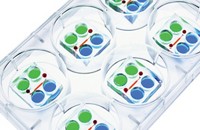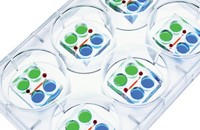Advertisement
Grab your lab coat. Let's get started
Welcome!
Welcome!
Create an account below to get 6 C&EN articles per month, receive newsletters and more - all free.
It seems this is your first time logging in online. Please enter the following information to continue.
As an ACS member you automatically get access to this site. All we need is few more details to create your reading experience.
Not you? Sign in with a different account.
Not you? Sign in with a different account.
ERROR 1
ERROR 1
ERROR 2
ERROR 2
ERROR 2
ERROR 2
ERROR 2
Password and Confirm password must match.
If you have an ACS member number, please enter it here so we can link this account to your membership. (optional)
ERROR 2
ACS values your privacy. By submitting your information, you are gaining access to C&EN and subscribing to our weekly newsletter. We use the information you provide to make your reading experience better, and we will never sell your data to third party members.
Tissue Engineering
Japanese team grows mouse kidneys in rats
The study marks a step toward growing human organs in other animals, but experts worry about the ethics of the method
by Megha Satyanarayana
February 7, 2019
| A version of this story appeared in
Volume 97, Issue 6
More than 100,000 people in the US are waiting for a kidney transplant. To help meet those needs, some scientists have proposed growing human kidneys in another animal.
Researchers in Japan have taken a step in that direction, growing what seem to be anatomically correct mouse kidneys in the bodies of rats, using a type of early-stage stem cell called a pluripotent stem cell (PSC) and an early-stage embryo called a blastocyst (Nat Comm. 2019, DOI: 10.1038/s41467-019-08394-9). The research team says further testing is needed to determine if the organs are functional, and some experts worry about ethical issues involving the method’s use of PSCs.
Masumi Hirabayashi of the National Institute for Physiological Sciences, Okazaki, and colleagues first developed the technique to grow pancreases. In the new study, Hirabayashi’s team started with rats born without kidneys due to a mutation. They made blastocysts from those rats and added PSCs taken from mice. The embryos, now with both rat and mouse cells, grew into rats with mouse kidneys. One of the biggest hurdles, Hirabayashi says, is figuring out why the rats struggle to survive beyond eight weeks after birth.
The resulting kidneys were smaller than normal rat kidneys, likely because mice are smaller animals, but they had the proper structures and connections to other organs in the body. The researchers ran several biochemical assays to determine if the organs had the correct anatomy and physiology, but Hirabayashi says the only way to truly tell if the organs work is to transplant them into another animal and monitor whether they properly filter blood and produce urine—tests yet to be performed.
But some researchers say the method raises ethical challenges. Pluripotent stem cells, they point out, can become nearly any structure in the body, and could seed the development of not just kidneys, but entire organisms.
The study demonstrates that the blastocyst-PSC method has merit, but use in humans is still far off, in part due to these ethical concerns, says Ryuji Morizane, a stem cell expert who creates kidney-like organoids at Harvard University and Brigham and Women’s Hospital. Theoretically, he says, human PSCs could make an entire human in another animal.
Hirabayashi agrees with these concerns and acknowledges that those worst-case scenarios would be unacceptable. He says one hurdle for the method is making sure that PSCs transplanted from one species to the next go on to develop into the target organ, rather than something else.
CORRECTION:
This story was updated on Feb. 7, 2019, to clarify that we have not confirmed that the Japanese team is planning to transplant and test the function of rat-grown kidneys in animals.




Join the conversation
Contact the reporter
Submit a Letter to the Editor for publication
Engage with us on Twitter